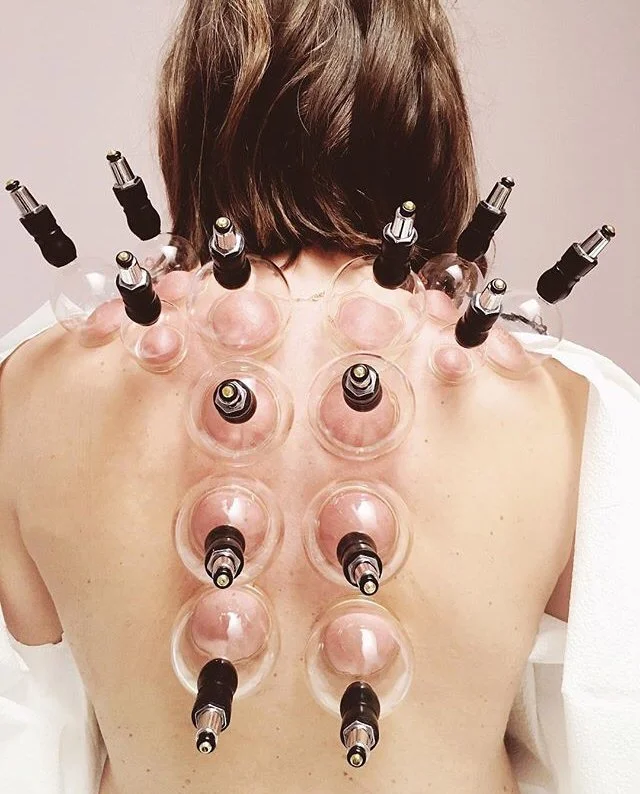Accessible Ways to Incorporate Traditional Chinese Medicine At Home
Traditional Chinese Medicine (TCM) offers a number of approaches for achieving harmony in the body but access to its therapies can be out-of-reach for many, whether due to finances or location. TCM treatments are wide, though, and there are practises that can be incorporated into everyday, from herbal therapy and nutrition to Qigong and Tuina (Chinese acupressure or massage). Below are ways in which you can infuse TCM into your daily routine.
Please note: These TCM therapy modalities, although helpful, are not intended to diagnose, treat, cure, or prevent any disease. If it is within your means, we always suggest seeing a TCM practitioner to work closely to understand your individual imbalance(s).
Incorporate herbs & rotate new vegetables
TCM classifies healing foods into two categories: the first includes foods that are part of a typical diet, such as broccoli, celery, carrots, apples, and the like. The second includes foods and herbs that are prescribed in certain amounts, often for specific periods of time, such as ginseng, ginger, or Goji berries. These foods are usually prescribed when an aspect of the body is out of balance. Foods can help your body regain its natural balance.
Dried herbs that you have in your spice rack or fresh herbs you might already be using can be medicinal when consumed in higher doses or incorporated into meals more regularly. An example is eating the liver meridian-supporting vegetable asparagus at least three times a week, in an easy form like asparagus soup. On the note of soups, this is another vessel that can help you incorporate more herbs through infusions. Instead of water, use homemade chicken broth infused with herbs like rosemary, astragalus, or ginseng (or all!) to make the soup more medicinal. I love cooking broth after making whole chicken and using the leftover bones for the broth alongside vegetables scraps, herbs, and salt. My specific recipe can be found in the book The Thirlby. If you’ve read our recent article on hormone balance, you’ll know that liver imbalance is often the culprit for hormone imbalances & their various manifestations. Other liver-supporting foods you can include are bamboo, broccoli rabe, dandelion, eggplant, fennel and scallions.
Qi gong
Qi gong is an ancient Taoist and Buddhist practice of movement, breathwork, and meditation that uses movement to foster a better flow of qi, or energy. It could be comparatively called the Chinese cousin of yoga but does not require as much flexibility or strength. You can find classes easily on YouTube, such as this one. Trying new forms of movement also not only enriches our qi but can work to foster mental flexibility and agility.
Acupressure and Acupressure Mat
If and when acupuncture is not within your means, or even in between sessions, an acupressure mat can cultivate a similar sense of balance. We love WTHN’s acupressure mat as it comes with a neck pillow as well ad its own carrier bag. Click here for $10 off your order.
You can also incorporate acupressure just with your hands by massaging with your thumb the points that correlate with imbalance symptoms you are experiencing. For instance, if you’re experiencing period cramps or the onset of a migraine, search for period cramp acupressure points then gently massage said areas. Here is a video of acupressure massage for period cramps, just as an example. Make it even more medicinal by giving yourself a full body massage with an herbal body oil. Use a simple warmed oil like sesame oil for groundedness with a few drops of sandalwood essential oil or, if you would like to further indulge, we love this one from F. Miller Skincare and this one from our friends NOTO Botanics.
Ear Seeds
If you’ve been to a TCM practitioners office, you might have been given ear seed(s) or a small sticker with a tiny bead in it to stimulate certain acupressure points on the ear. You can purchase a kit that guides you for doing it at home for simpler issues (read: not to diagnose and treat imbalances) such as stress or nausea. Our friends at WTHN have much nicer looking ear seeds (that don’t look like tiny band-aids on your ear) and you can use the link above again for $10 off your order.
About the Author
Almila Kakinc is the Founder, Editor-in-Chief of The Thirlby. She is also the author of the book The Thirlby: A Field Guide to a Vibrant Mind, Body, & Soul. She earned her Master’s in Nursing as a Dean’s Scholar from Johns Hopkins University and is currently a Labour & Delivery Nurse. Her background is in Anthropology & Literature, which she has further enriched through her Integrative Health Practitioner training at Duke University. She lives in Seattle, WA, where she regularly contributes to various publications. She is a member of Democratic Socialists of America and urges others to join the movement.




